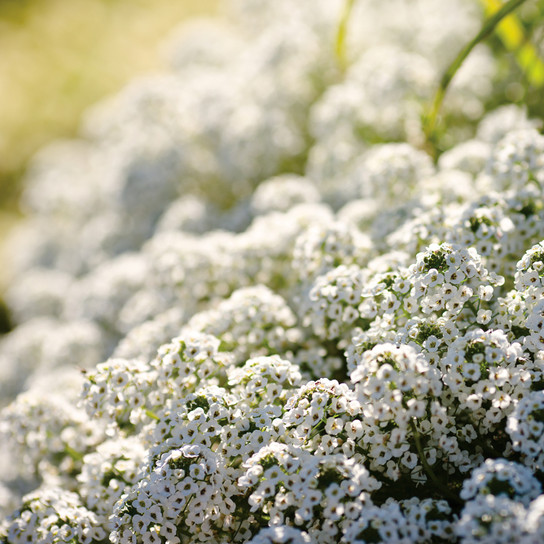
Switch Grass
Uses:
- Rain Gardens
- Meadows & Prairies
- Livestock Grazing
- Erosion Control
Features:
- Fine Texture
- Airy Seedbeds & Fall color
- Low Maintenance & Adaptable
- Attracts Birds
Sunlight:
- Partial Shade to Full Sun
- At Least 4 Hours of Direct Sunlight
Growing Zones:
- 4-9
- What is My Zone?
Switch grass, also known as Panicum virgatum, is a medium-sized native grass with several wonderful attributes. It is highly adaptable to a wide range of sites including poor soil, clay, and sand. Its flower plumes appear in mid-summer and mature to airy, reddish-purple seed heads. The fine-textured foliage helps soften landscapes and comes in several colors including blue-green, red-tipped, and bright green. This grass can be used in erosion control, rain gardens, container gardens, and pasture for livestock.
About Switch Grass

Panic Grass, Panic Grasses, Switchgrass, Tall Panic Grass, Thatch, grass, Wild Redtop
North America
Ornamental Grasses
Deciduous
4 - 9
Gold/Yellow, Pink, Purple/Lavender, Red/Burgundy
Fall, Summer, Winter
Clumping, Columnar, Dense, Erect
Small Mammals, Songbirds
Drought, Dry Soil, Erosion, Pollution, Salt, Wet Soil
Deer
How To Use Switch Grass In The Garden
Switchgrass (Panicum virgatum) is a native prairie grass notable for its upright, narrow form and mid-summer flower plumes that mature into airy seed heads by fall. This perennial reaches heights of 4 to 5 feet and widths of 2 to 4 feet, adapting well to various soil types, including clay and sandy soils. Its leaves often take on soft blue or metallic green hues before transitioning into pale gold, remaining upright through winter. The fibrous root network promotes soil stability and tolerance to drought.
When designing outdoor spaces, consider switchgrass for back borders or mass plantings where its height adds a layered effect. Larger cultivars work as informal screens or as a stately backdrop for blooming perennials. In small gardens, container-grown switchgrass creates a striking vertical contrast with more rounded foliage plants. Pair it with complementary prairie natives to achieve a harmonious, nature-inspired setting.
Types of Switch Grass
| Type | Scientific Name | Native | Foliage | Flowers | Zones | Features |
|---|---|---|---|---|---|---|
| African / Purple Fountain Grass | Cenchrus setaceus (syn. Pennisetum setaceum) | N. & E. Africa | Burgundy- to reddish-purple linear blades; turn gold in fall | Reddish-purple bottle-brush spikes | 9 – 11 (grown as annual colder) | Drought & deer tolerant, attracts birds, self-seeds; invasive in warm regions |
| Chinese Fountain Grass | Cenchrus alopecuroides (syn. P. alopecuroides) | E. Asia to W. Australia | Narrow medium-green leaves; golden-yellow in fall, beige in winter | Silvery- to pinkish-white bristly plumes | 5 – 9 | Deer, drought & salt tolerant; winter interest; attracts birds; may self-seed |
| Oriental Fountain Grass | Cenchrus orientalis (syn. P. orientale) | N-W Asia & N. Africa | Fine light gray-green tufts; straw-brown in winter | Soft pale-pink (rose-purple) fluffy panicles | 5 – 8 | Low water need, airy texture, long bloom, non-aggressive |
| Elephant / Napier Grass | Cenchrus purpureus (syn. P. purpureum) | Tropical Sub-Saharan Africa | Upright arching green blades (some purple) | Yellow-brown terminal plumes | 8 – 10 (annual north) | Rapid growth, bold texture, windbreak; can self-seed & become invasive in frost-free areas |
Switch Grass Care
Switchgrass thrives in full sun and adapts to various soil types, including clay and sandy soils, provided they are well-drained. When planting, position the crown slightly above the soil surface to accommodate settling. Water weekly during the first growing season to establish roots; once established, it tolerates drought but benefits from occasional watering during prolonged dry periods. Avoid fertilizing, as excessive nutrients can cause the grass to flop.
In early spring, prune switchgrass by cutting back dead foliage to a few inches above the ground before new growth emerges. This grass is hardy in zones 3–9 and requires no special winter care; leaving the foliage over winter adds visual interest and provides wildlife habitat. When growing in containers, select a large, well-draining pot and use quality potting soil. Water when the top two inches of soil are dry, typically 1–2 times per week during summer.
Learn More About Switch Grass Care

Switch Grass Companion Plants
Give switch grass all‑day sun and lean, average‑to‑moist soil that drains well yet never stays soggy. Avoid heavy fertilizer or shade that would make the stems splay. Purple coneflower anchors the summer display with drought‑tough taproots and rosy discs that rise neatly through the grass clumps, while fall-blooming aster slips its lavender stars into the panicles just as the blades take on burgundy tones—each echoing the same prairie heritage and soil preferences. Black-eyed susans supply a long ribbon of golden rays that harmonize with the autumn foliage, and tickseed (coreopsis) threads arching sprays of yellow that feed summer pollinators and visually transform the planting into a cohesive, low‑care meadow.
















